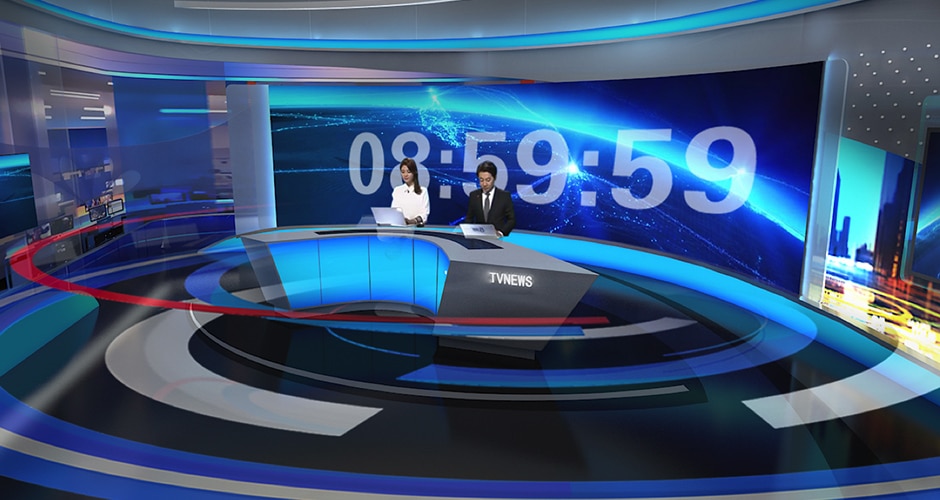With the development of LED, LED displays are increasingly applied as background walls in television studios and large-scale television relaying activities. It provides a large variety of vivid and gorgeous background images with more interactive functions. It displays both static and static scenes, connecting the performance and the background. It perfectly combines the atmosphere with the activity, boasting functions and effects that other stage art equipment doesn’t have. However, to give full play to the effect of LED displays, when selecting and using LED displays for broadcasting needs to pay attention to the following aspects:

1. Proper shooting distance. It is related to the pixel pitch and fill factor of LED displays. Displays with different pixel pitch and fill factors require different shooting distances. Take a LED display with a pixel pitch of 4.25mm and a filling factor of 60% as an example, the distance between it and the person being shot should be 4—10m, ensuring excellent background images when shooting. If the person is too close to the display, the background will be grainy and easy to have a moire effect when taking a close shot.
2. The pixel pitch should be as small as possible. The pixel pitch is the distance between the center of a pixel to the center of the adjacent pixel of LED displays. The smaller the pixel pitch, the higher pixel density and screen resolution, which means closer shooting distances but higher prices. The pixel pitch of LED displays used in domestic television studios is mostly 1.5—2.5mm. The relationship between the resolution and the pixel pitch of the signal source should be carefully studied for a consistent resolution and a point-by-point display so as to achieve the best effect.
3. The regulation of color temperature. As background walls in studios, the color temperature of LED displays should be consistent with the color temperature of the lights, so as to obtain accurate color reproduction during shooting. As required by programs, studios will sometimes use bulbs with a low color temperature of 3200K or with a high color temperature of 5600K. To obtain the best shooting effect, LED displays should be adjusted to the corresponding color temperature.
4. Fine using environment. The life and stability of LED large displays are closely related to the working temperature. If the actual working temperature exceeds the specified working temperature, displays will be seriously damaged with the service life greatly shortened. In addition, the threat of dust cannot be ignored. Too much dust will reduce the thermal stability of LED displays and cause electric leakage. In serious cases, displays may be burnt. Dust can also absorb moisture and corrode electronic circuits, causing elusive short-circuits. Therefore, it is never late to keep studios clean.
5. LED displays show clearer pictures with no seams. It is energy-saving and environment-friendly with lower power consumption and less heat generation. It has a good consistency, displaying pictures with no difference. Small-size cabinets make it possible to have smooth shapes. It has wider color gamut coverage and is less likely to be subject to reflections than other products. It has high operational reliability and low maintenance cost.
Of course, only when used properly can these advantages of LED displays be fully realized and make a great LED display solution for broadcast. Therefore, we should choose appropriate pixel pitch when using LED displays in TV programs. We should understand their characteristics and select products as background walls according to different studio conditions, program forms and requirements. In doing so, the effect of new LED display technologies can be realized to the maximum extent.